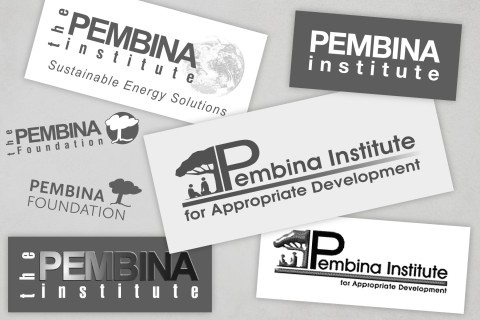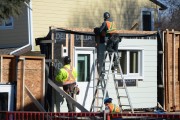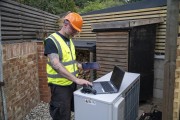Headlines about affordability and the cost of living have dominated news cycles for quite some time now. While these tend to point to higher grocery bills or increasing transit costs, there’s another essential price tag on the rise that fewer people are talking about – home insurance. Home insurance premiums are rising as more frequent and severe weather events strain the system. Specifically, protection from severe weather events such as fires and floods is becoming more costly and, in many cases, unaffordable.
These intersecting affordability and climate crises are made worse by the economic uncertainty coming from south of the border. Events unfolding within this context will no doubt have a knock-on effect on the supply chains for energy and building material, along with much more.
In 2024, the Insurance Bureau of Canada received over 280,000 claims – a 406% increase from the 20-year average. In Alberta between 2014 and 2024, average annual insurable losses have increased by 495%, and home insurance premiums in the province have risen by 90%. The wildfires that devastated Jasper last summer reportedly cost over $880 million in insured losses. And, wildfires in the province are starting to burn more land than in past years, exposing more homes to fire damage and driving costs upward.
But long before fires start, there are actions homeowners can take to make their homes more resilient. Insurance companies need to start providing incentives for retrofits to help Albertans safeguard their homes from severe weather events like hailstorms and fires.
The Intact Centre on Climate Adaptation has started a first-of-its-kind pilot program in Alberta and British Columbia for customers who have a property within five kilometres of an active wildfire. Intact has partnered with Wildfire Defense Systems, a wildfire consulting and risk mitigation service, who will help remove flammable materials around the home, close vents and windows to prevent embers from entering the home, and set up temporary sprinkler systems. Groups like the Wildfire Defense System can help homeowners get ahead with protections they don’t have time to think about as they’re in the process of evacuating but do think about long after they have escaped the immediate danger.
Deep building retrofits with resilient building materials offer another approach to improve a home’s resistance to extreme weather events — and reduce life-altering impacts. People understand that retrofits improve the comfort and energy efficiency of a building, but less well known is the critical difference that integrated upgrades can make to mitigate damage from severe weather events. Critical improvements can include increasing the air tightness of a building, upgrading windows to triple-glazed, reducing the number of vents, or opting for damage-resistant roofing materials.
In the recent fires in Los Angeles, a few homes seem virtually untouched amongst the tragic devastation. One example is the home of Greg Chasen, which now stands alone surrounded by ashes where there were once neighbouring houses. Built with Passive House objectives in mind, the home has neither eaves nor overhangs, which can readily catch fire from blowing embers. It is also without attic vents, which can allow sparks to enter the home. Passive House design has its origins in Saskatchewan in 1977 in response to the energy crisis at the time — a model of energy efficiency and renewable power proven for a cold climate. The walls of the house are made from a material that has a one-hour fire rating, and the wood used for the deck is Class A, meaning it has the same fire resistance as concrete. The airtight building envelope, tempered glass windows, and concrete perimeter walls all played a key role in preserving the structure and are key measures that other owners should consider for new and existing buildings.
Chasen’s home doesn’t have to be an outlier. If more structures in these neighbourhoods used similar resilient measures and materials, the community-wide decimation and staggering insurance costs could be significantly mitigated.
Alberta is no stranger to fires and has experienced some of the worst in Canada. As Albertans look for ways to protect their homes from severe weather events, government and the insurance sector need to play a part in both incentivizing resilient retrofits, and in ensuring markets reward investments that reduce cost and risk. The more retrofits that occur, the safer and healthier we will be and the more affordable our homes will be over their lifetimes.
The Pembina Institute acknowledges the generous support of the Alberta Ecotrust Foundation.
Why Alberta needs resilient retrofits now
The province has seen a 90% surge in home insurance costs
February 14, 2025
Article
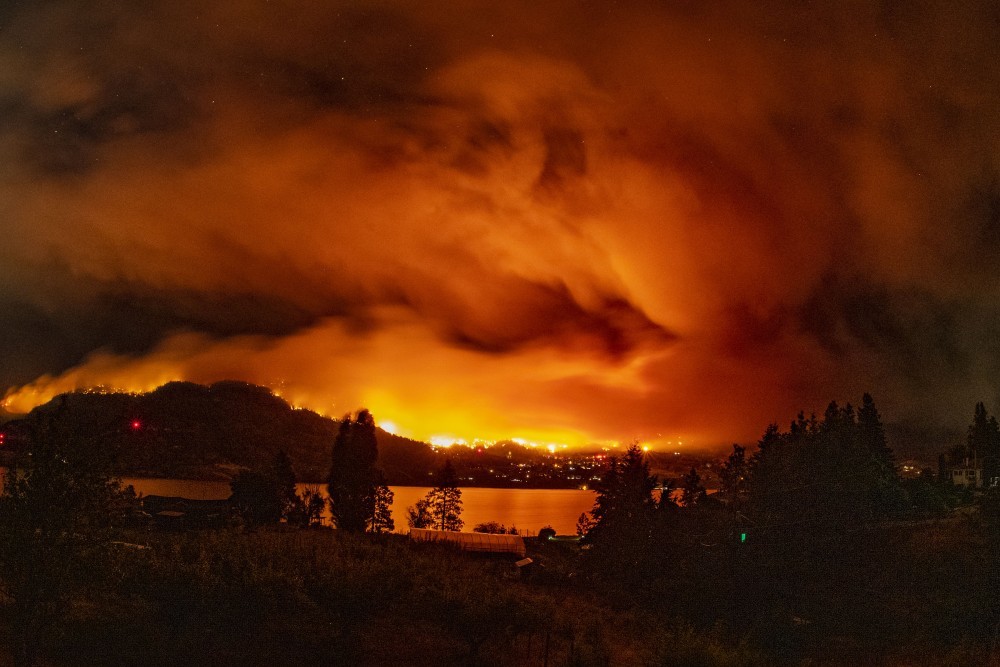
Wildfire in Canada Photo: iStock
Related Research & Analysis
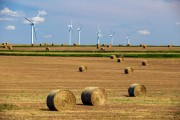
Buildings, Electricity, Equitable Transition, Oil & Gas, Transportation
October 18, 2024
Article
The new energy economy has arrived, and Canada must pay attention
International Energy Agency’s 2024 World Energy Outlook full of proof points of the scale and pace of the world’s transition to clean energy




Programs
Leading the transition to clean energy requires advancing solutions to today’s energy challenges from various angles.
The Pembina Institute has spent four decades working to reduce the environmental impacts of Canada’s energy production and to provide actionable ideas on how to implement clean energy.
